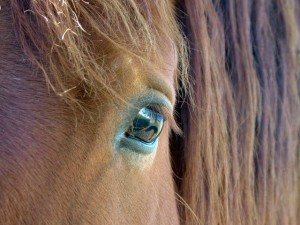The other day I was riding a bus in San Francisco. I am a tourist, but I try to fit in and belong in the “big city.” To do so, I have become hyper-aware of the rules and I try to follow them, all. Like many public transit systems, younger riders are expected to make way for elder riders, when necessary. On the SF buses, this rule is posted everywhere, and every few stops there is an automated reminder that repeats over the speaker system. On this day, an elderly gentleman boarded the bus after me. He looked at me, and I froze. Although there was a seat available to my left and to my right, I moved over one seat to allow him to take the seat closest the door through which he was entering. I don’t know I did this exactly, I was trying to be nice and respectful, I suppose.
He took it as an invitation to start talking to me. He explained how the first time a young woman had done that was fifteen years ago and he yelled at her and wouldn’t take the seat. “These days,” he said, “I’ll take all the nice things people will do for me.” Aside from “oh,” “yes,” and “yeah” I wasn’t really able to say much for the ten minutes he talked to me (or was it at me?) until my stop. Finally, I broke in mid-sentence and wished him a good day as I hopped off the bus. The smell of his stale breath stayed with me for the two blocks I walked to my destination.
In her book Pyschoanalytic Diagnosis, Nancy McWilliams describes narcissists as, “People whose personalities are organized around maintaining their self-esteem by getting affirmation from outside themselves.”
continue reading »
Do you know what it feels like to be seen? That wonderful exchange between you and a gracious friend or loved one, who really steps outside their own experience to see you in yours, do you know what I mean?
One of my teachers at one of my programs, James Flaherty, asked me an intense question once. He asked, have you noticed how many people in our world are doing out of the ordinary things, just for the sake of being seen? His examples were about recent Olympians who had felt like if they didn’t win gold, all would be for not. And, I extended this notion, what about people who misbehave? For example, sometimes criminals seem to me to be just acting out for the attention they perhaps did not receive as a child. What about the loud, obnoxious person in a restaurant, about which we always say, “Oh, ignore him, he just wants attention.” Yes! That’s exactly what he wants, and perhaps a question we could ask ourselves is why someone needs attention so badly that they must act in uncomfortable or inappropriate ways to receive it. continue reading »
As a student of depth psychology, I study lots of different mental disorders. I have often joked with my fellow students about my tendency to  self-diagnose in every class, seeing a bit of myself in each of the “disorders” as we learn about them. This got me to thinking, what if we stopped labeling ourselves and each other with these very limiting terms?
self-diagnose in every class, seeing a bit of myself in each of the “disorders” as we learn about them. This got me to thinking, what if we stopped labeling ourselves and each other with these very limiting terms?
Disorder: If I look at the breakdown of the word, from the Classical Latin, it is a combination of two ideas: dis- “take away” + ordinare “to order, regulate.”
From the perspective of mental disorders, this could be thought of as, the “taking away” of one’s ability to mentally “order, or regulate.” So, without an ability to mentally regulate, one many experience a mental disorder.
In our world where clinical symptoms are rattled off as fast as is humanly possible during each TV commercial break, medical terminology is entering our everyday language. How many times have you heard the phrases, “She’s bipolar!” or “What a narcissist!”?
With the root of the word “disorder” in mind, it became clear to me that a person in fact is not their mental disorder. We are each so much more. All joking aside, I have experienced many of the disorders about which I read. There have certainly been times of depression, and narcissism, and neuroticism, and the list goes on. Each time, I have been able to “restore order” for myself, in other words, they were temporary states of being for me, they were not “me.” continue reading »
 I have recently started reading the book: Shambhala: The Sacred Path of the Warrior, described as a “practical guide for enlightened living.” In it, author Trungpa talks about breaking old habitual patterns. He says that calling someone a toranoko- a Japanese term for tiger cub, used pejoratively is saying this “you mean that he is a paper tiger, someone who appears brave but is actually a coward.” And Trungpa then makes the declaration, “That is the description of clinging to habitual patterns.”
I have recently started reading the book: Shambhala: The Sacred Path of the Warrior, described as a “practical guide for enlightened living.” In it, author Trungpa talks about breaking old habitual patterns. He says that calling someone a toranoko- a Japanese term for tiger cub, used pejoratively is saying this “you mean that he is a paper tiger, someone who appears brave but is actually a coward.” And Trungpa then makes the declaration, “That is the description of clinging to habitual patterns.”
Likely, most of us aspire to be more like real, living tigers rather than paper ones, so why all the focus on not clinging to habitual patterns?
Thinking about what a habitual pattern is, I realized there is a neurological aspect occurring simultaneous to the display of the habit. In our brains, after we pass the age of three, we are mature enough to start making neural connections based on experience. Up to that point, our Limbic System is primarily driving our behavior. The Limbic System encompasses the functions we share with the animal kingdom, including such things as our “fight or flight” responses, our capacity for infatuation, as well as our process to store memories as pictures (as we mature we include narrative with memory). continue reading »
As the month of February takes off…the topic of connection is at hand. But, how about going beyond our connection to each other, and exploring our connection to the animal realm? Winston Churchill once said, “There is something about the outside of a horse that is good for the inside of a (hu)man.” What is it about this quote that seems to resonate with people who spend time with horses, either for work or pleasure purposes?
The emerging field of Equine Assisted Psychotherapy is proceeding, whether or not the answer to the above question is clear. EAP is psychotherapy with the addition of a horse, or in some cases a group of horses. In an EAP session, there is a participant, a psychotherapist, a horse specialist, and a horse. The participant interacts with the horse with the support of the psychotherapist, and the assistance and safety assurance of the horse specialist. The incorporation of horses into therapy provides an experiential opportunity for healing that goes beyond traditional methods. Both the psychotherapist and horse specialist must have specific training in EAP. Since its founding in 1999, the Equine Assisted Growth and Learning Association, an international non-profit providing EAP training, has granted over 3,000 certifications.
What’s going on here?
The unique human connection to horses is documented as far back as ancient Greece, by Greek historian and philosophical essayist, Xenophon. Born in Athens around 430 B.C.E. Xenophon was studying the way the relationship between horse and rider can be an expression of the archetype of Beauty. In her book, Dressage in the Fourth Dimension, author Sherry Ackerman, explains Xenophon’s view this way, “The ancient teaching held that Beauty was expressed by harmony which was born of perfect balance. The body, mind and spirit of the rider were to attain this integrated state of balance…a harmonious partnership between horse and rider, which expressed itself in Beauty.”
continue reading »

Shifting into Web 2.0 technologies is indicative of our entrance into the Age of Aquarius. With Web 2.0 technologies
(e.g. Facebook, Twitter, Blogs), we have shifted from a simple push of information, that being a static webpage, to an interactive environment.
The major distinctions of the Age of Aquarius are these: the breakdown of structures, personal liberty in combination with respect for all mankind, the balance of the will to change and the will to preserve, the urge toward civilization and consciousness. One of the planetary rulers of Aquarius is Uranus (the other is Saturn), and as I discussed last week, Uranus is almost always going to cause change in the sudden breakdowns of structures, much like a lightning bolt.
We are already seeing many breakdowns in societal structures with the Age of Aquarius, and social media further enables this. Here’s one example – it used to be that the elite celebrities were not accessible to ordinary folks except through the lens of media cameras. However, when Britney Spears revealed that she was not sending her own Tweets via Twitter, her followers voiced their disappointment. Why?
continue reading »
I know this has been said too many times, and in fact was a call to action in the recent elections, which of course we experience the result of this week with President Obama’s inauguration. However, I’d like to add thoughts to a perspective that may not receive as much attention as our current economic crisis, international embarrassments, or our dependence on foreign oil, and that is this- astrologically, it is time for a change as well.
Astrology is an important lens with which to view the world from the perspective of depth psychology because like all cultural traditions there is something to be learned from it. A foundational principle of depth psychology is “as above, so below.” Basically, this means that things reflect each other. Thus we have discussed symbols being reflective of inner dynamics, and so too can the planets be reflective of what is going on inside an individual, as well as a culture. Astrology has survived for over two thousand years, and that fact alone makes it important to understand its language, in my perspective.
psychology because like all cultural traditions there is something to be learned from it. A foundational principle of depth psychology is “as above, so below.” Basically, this means that things reflect each other. Thus we have discussed symbols being reflective of inner dynamics, and so too can the planets be reflective of what is going on inside an individual, as well as a culture. Astrology has survived for over two thousand years, and that fact alone makes it important to understand its language, in my perspective.
Astrologically speaking, the years of 2007-2012 are extremely important years. Interestingly, the acknowledgment of these dates as a critical time period coincides with many other traditions, such as the Mayan calendar.
continue reading »
One of the ways we learn about custom is through the fairy tales our caregivers tell us. Stories that are carried through the ages have messages in them that are important for our development. Through the lens of depth psychology, we often learn about what is important to a culture by studying the stories that are popular within it. Stories that recycle throughout generations and change relevant to each generation’s uniqueness are particularly of interest.

In Bram Stoker’s original story, Dracula, (released in 1897), the vampires sucked blood to their victim’s ultimate demise, and any victim- human or animal would suffice. However in the latest twist on the theme, Twilight, the vampire legacy is being changed slightly, with some vampires choosing only the blood of animals.
What might the change in story line inform us about this very ancient fear, in depth psychological terms? Depth psychology starts by researching the symbol, and in this case, what does the symbol of a blood-sucking vampire reveal?
Blood represents life, and it can also represent creativity, especially in the sense that creativity is the energy needed to create life. In her book, On the Way to the Wedding, Linda Leonard explains the Dracula myth as revealing the nature of possession (both our human desire to possess and/or to be possessed). In our real lives we can see the myth show up in the form of obsessive jealousy, addiction, and of perpetually offering up one’s creativity (lifeblood) for the benefit of another. We might call the relationship between a vampire and its victim an (extremely unhealthy) co-dependent relationship.
continue reading »
 Often the way we feel about a particular person is reflective of what that person represents within us. That is to say, if there is something we do not like about someone else, it may represent a shadow nature that we, ourselves,possess. This is Carl Jung‘s classic idea of shadow projection, and a premise of depth psychology. We hear the terms in today’s vernacular, “…maybe I’m projecting, but I feel as though…” or “That’s his shadow, he doesn’t see how his actions are affecting me.”
Often the way we feel about a particular person is reflective of what that person represents within us. That is to say, if there is something we do not like about someone else, it may represent a shadow nature that we, ourselves,possess. This is Carl Jung‘s classic idea of shadow projection, and a premise of depth psychology. We hear the terms in today’s vernacular, “…maybe I’m projecting, but I feel as though…” or “That’s his shadow, he doesn’t see how his actions are affecting me.”
Similarly, we can view our relationship to a group, say animals, as reflective of what they represent within us.
Recently, I attended a book signing by author Marc Bekoff, who wrote a book I like called, The Emotional Lives of Animals. In it, Bekoff discusses the unfortunate view of science that laboratory animals do not possess emotions thus they do not experience the suffering of scientific testing. In fact, although it is supposed to be in place for their protection, the Animal Welfare Act excludes rats bred for research from the definition of “animal” for scientific needs.
continue reading »








